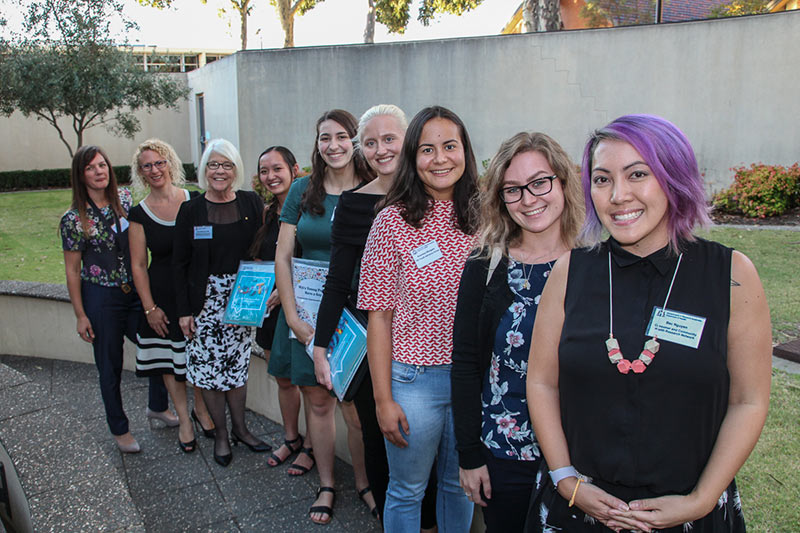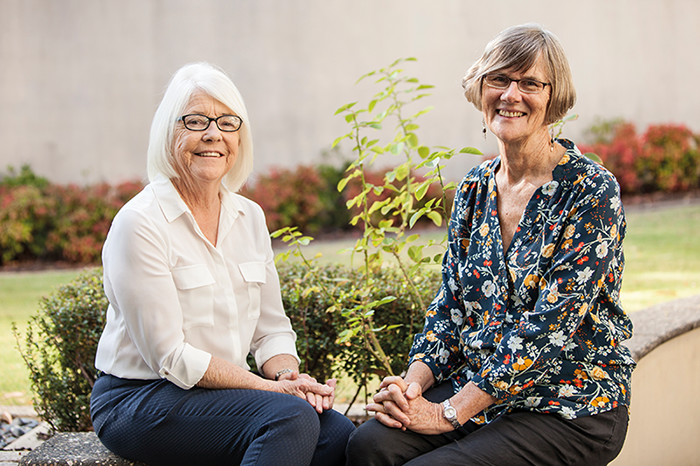
Members of the Consumer and Community Health Research Network
The Kids Research Institute Australia has long been recognised for the research it produces. But the way the Institute collaborates with the community – asking what they most want or need to know about and tailoring research to deliver those outcomes – is also leading the way.
In April, Western Australia finally got something it had long needed – a formal health policy designed specifically for its young people.
The WA Youth Health Policy 2018-2023, launched by Minister for Health Roger Cook at The Kids Research Institute Australia, came after a long process of consultation with the very people it affected most – young people who in the past have sometimes struggled to find health services that would treat them with respect and provide honest and understanding advice.
The policy aims to benefit the health and wellbeing of young people and to help others, including families and carers, community/advocacy groups, and health professionals, contribute to better outcomes for youth.
Its development came with significant help from The Kids Research Institute Australia, including members of the Consumer and Community Health Research Network, who facilitated a series of community conversations with young people across WA to find out what was important to them.
Network Head Anne McKenzie said all up, her team spoke with 122 young people in Perth, Bunbury and Broome.
“The kids were amazing, the things they came up with,” Ms McKenzie said.
“They really identified gaps about where to go for credible information, the one-stop-shop and having youth-friendly services available.”
It was not the first time the Institute had asked young people to guide its work priorities. The The Kids Youth Advisory Group was formed in 2016 after the Institute’s leadership team realised there was limited input from young people informing their research priorities.
The group, made up of 23 young people aged 15-25 years, helped develop the questions to be asked during the Youth Health Policy community conversations process.
The new policy identified areas for improvement including better access to services, building knowledge and promoting participation, achieving equitable health outcomes, collecting comprehensive data, and building skills for effective interactions with young people.
The Kids Research Institute Australia currently has 298 community members sitting on decision-making committees.
“It’s the way business is done at The Kids, but it’s quite different to the rest of the country,” Ms McKenzie said.
Other research groups at The Kids also have major collaborations with consumers, with FASD Research Australia Director and Senior Principal Research Fellow Professor Carol Bower in particular a champion of community involvement in research about alcohol in pregnancy and fetal alcohol spectrum disorder (FASD).
Professor Bower and colleagues established a national Community Reference Group as an integral part of their Centre of Research Excellence (FASD Research Australia). In collaboration with the Reference Group and the Consumer and Community Health Research Network, they engaged in a priority- setting partnership to find out what members of the public across the country wanted from research in this area.
“We really wanted to engage with people, consumers, across the country to find out what they thought was important in research about alcohol in pregnancy and FASD,” Professor Bower said.
“Researchers have their ideas and can sometimes go off on a tangent without really necessarily understanding what the community might want to know. What’s important to the community might not be as high on the researchers’ list.”
Through national surveys and a consensus workshop, community participants arrived at their top 10 priorities for research on alcohol use in pregnancy and FASD.
“The public are ultimately paying for this research, and it’s about them, and often on them. We should be involving them in it to make sure that we do it in the right way and find out the things they want to know. It’s the right thing to do,” Professor Bower said. “That’s been my motto.”
It turned out the community wanted more research on understanding societal views and beliefs about alcohol use in pregnancy. Seven of the top ten topics related to healthy pregnancy or prevention of prenatal alcohol use – areas that researchers will explore further.
Ms McKenzie said the consultation represented a good practice model of involvement, with the method being used and further refined for other areas of research.
What's next
- Researchers want to find ways to measure the impact of community involvement in research.

